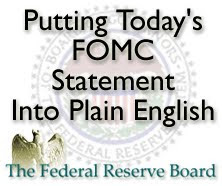 Earlier this week, Standard & Poors released its February Case-Shiller Index, a home price tracker for select metropolitan areas.
Earlier this week, Standard & Poors released its February Case-Shiller Index, a home price tracker for select metropolitan areas.Overwhelmingly, home values fell in the 20 markets tracked by the Case-Shiller. Only San Diego showed a modest increase. The other 19 markets averaged a 1.23 percent decline between January and February.
However, that's not the story you read in the most papers. Instead, headlines read that home values were up in the United States, citing annualized data.
Unfortunately for active home buyers and sellers, year-over-year data isn't all that helpful when making a real estate decisions. It's the month-to-month data that matters. Month-to-month changes in home prices are what defines a housing market. Month-to-month is what sets the tone for contracts and negotiations on a purchase.
The rosier, annualized data published this past week just doesn't capture the reality of what was the February 2010 market. And even then, the data is somewhat useless because it's from February and May will be upon us next week.
Case-Shiller is on a 2-month lag -- hardly reflective of the "right now" of real estate.
When you're looking for real estate data that actionable, consider using sources that are more "real-time". A real estate agent may be the right place to start. Because for all the data that Case-Shiller and the other housing indices collect, it can never be as relevant to your individual needs as a well-executed, timely market analysis.
 Yesterday, the Federal Open Market Committee voted 9-to-1 to leave the Fed Funds Rate unchanged within in its current target range of 0.000-0.250 percent.
Yesterday, the Federal Open Market Committee voted 9-to-1 to leave the Fed Funds Rate unchanged within in its current target range of 0.000-0.250 percent.
 The sales of newly-built homes
The sales of newly-built homes 
 Existing Home Sales rose in March, as expected. U.S. home buyers closed on 7 percent more homes as compared to February.
Existing Home Sales rose in March, as expected. U.S. home buyers closed on 7 percent more homes as compared to February.

 Mortgage markets improved last week for the second week in a row. And, also for the second week in a row, rates were down on "safe haven" buying -- just not for the same safe haven reasons as before.
Mortgage markets improved last week for the second week in a row. And, also for the second week in a row, rates were down on "safe haven" buying -- just not for the same safe haven reasons as before. The federal home buyer tax credit expires April 30 and the deadline is sparking a home sale surge. It figures to burden real estate, mortgage and title offices nationwide over the next 60 days so plan your closing date accordingly.
The federal home buyer tax credit expires April 30 and the deadline is sparking a home sale surge. It figures to burden real estate, mortgage and title offices nationwide over the next 60 days so plan your closing date accordingly.

 Mortgage markets improved yesterday after the Federal Reserve released its
Mortgage markets improved yesterday after the Federal Reserve released its  As expected, the Pending Home Sales shot higher in February, boosted by the federal home buyer tax credit's April 30 deadline.
As expected, the Pending Home Sales shot higher in February, boosted by the federal home buyer tax credit's April 30 deadline.
